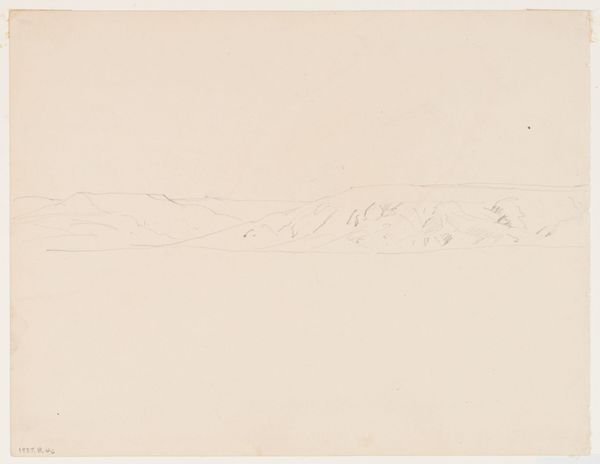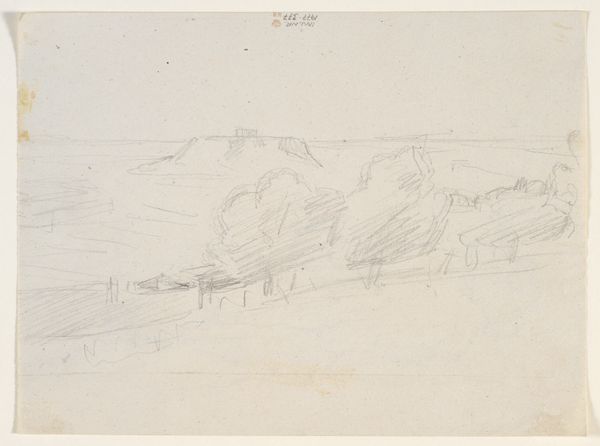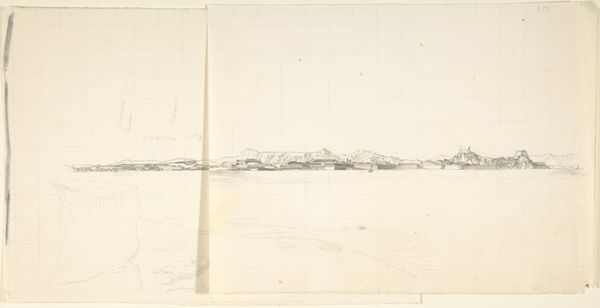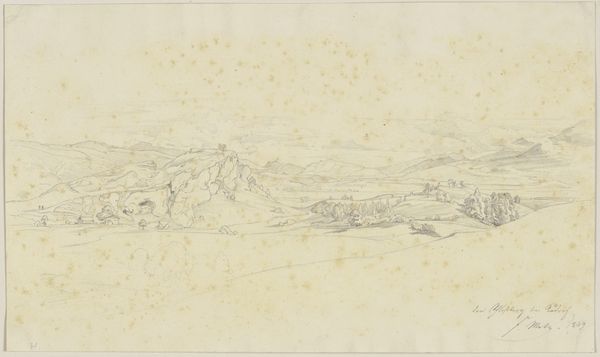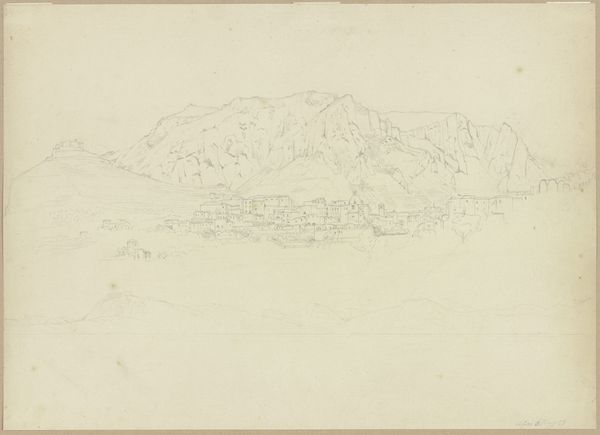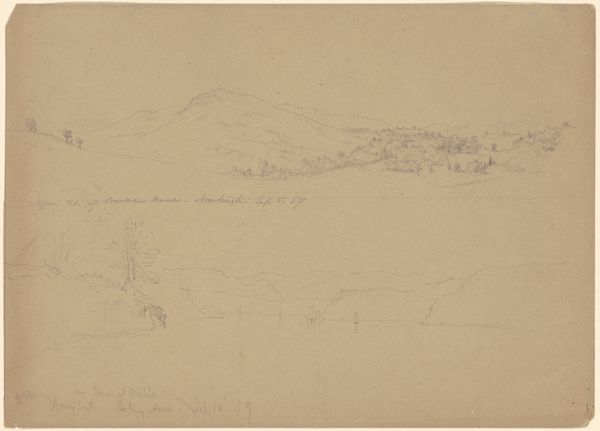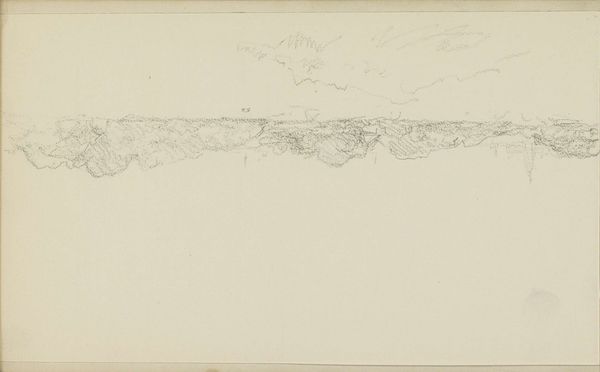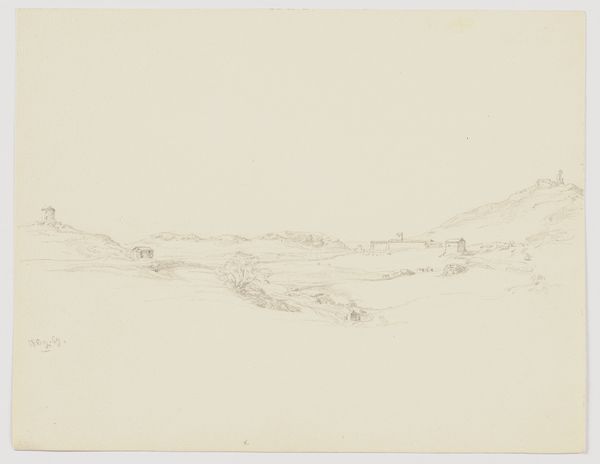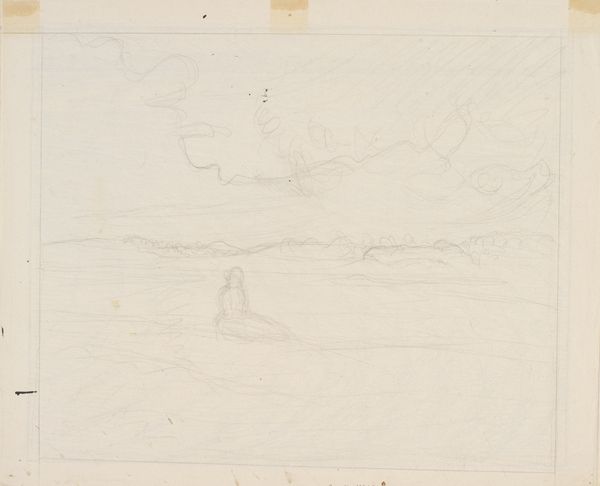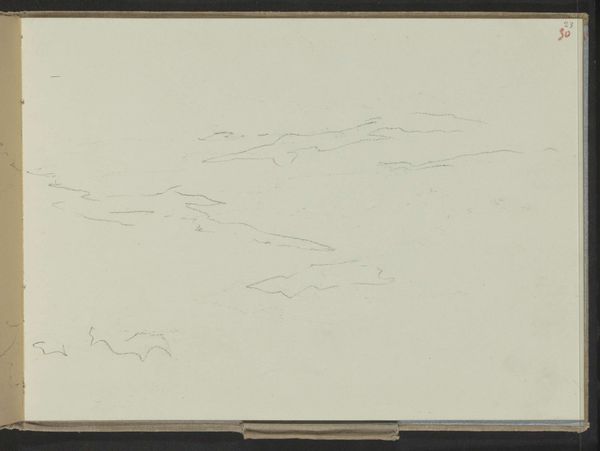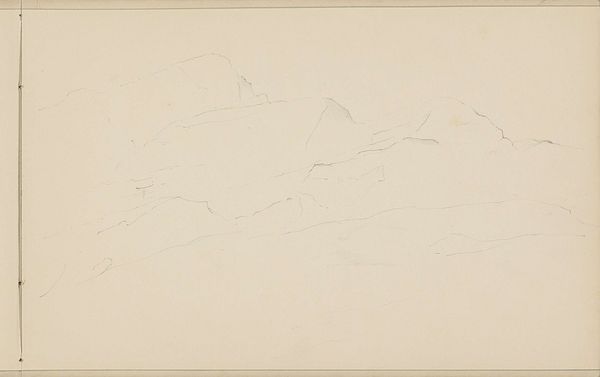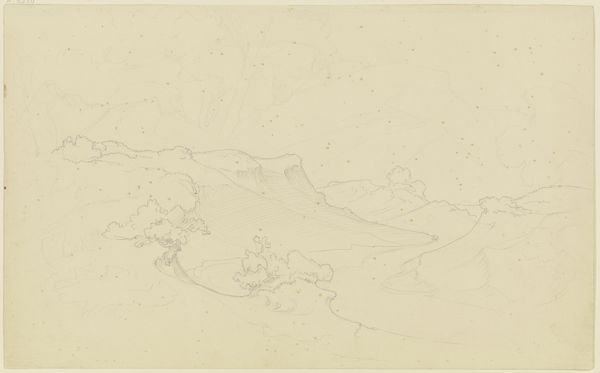
Dimensions: height 334 mm, width 510 mm
Copyright: Rijks Museum: Open Domain
Ferdinand Hart Nibbrig's pencil drawing offers a panoramic view of the Eifel landscape. The rolling hills and cultivated fields invoke a sense of agrarian harmony. The grid-like structure of the fields echoes ancient Roman cadastral systems and their imposition of order on the natural world. We see this motif echoing through time—from ancient Roman land surveys to Renaissance landscape paintings, each era adapting the symbol of structured land to reflect its worldview. These symbols, deeply embedded in our collective memory, awaken primal feelings of belonging and control. The landscape, a mirror to our souls, reflects our desire to tame nature while being nurtured by it. This tension is a powerful force, engaging viewers on a subconscious level, stirring up emotions tied to our ancestral past and our yearning for connection with the earth. The cyclical reappearance of landscape as a structured, meaningful space is not linear but a complex, interwoven narrative that continues to evolve.
Comments
No comments
Be the first to comment and join the conversation on the ultimate creative platform.
